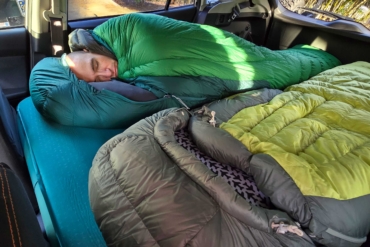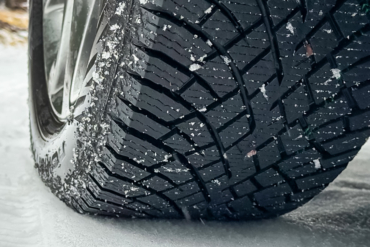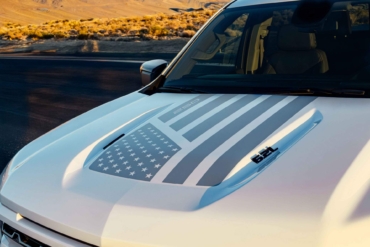There’s been plenty written about the Tesla Autopilot system since it debuted in October 2015, as well as its newer Full Self-Driving technology. Billed as the first hands-free driving system, Autopilot helped the carmaker push to record sales levels last year while contributing to its industry-leading profit margins.
But the semi-autonomous systems may not be all that Tesla claims. A new report by influential Consumer Reports criticizes Autopilot, in particular, ranking it just seventh out of 12 similar technologies now on the market, including what it judged the market leader, Ford’s BlueCruise system.
Meanwhile, this week, Mercedes-Benz confirmed it will launch its even more advanced Drive Pilot technology in the U.S. later this year.
Perhaps the biggest headache for CEO Elon Musk and Tesla, however, is the reality that neither Autopilot nor the newer Full Self-Driving (FSD) technology should actually be driven hands-free. While Musk has frequently been shown behind the wheel, with hands in his lap, or waving in the air, Tesla’s own website stresses that drivers must retain at least a light grip on the wheel.
And this is creating a mountain of legal problems that could see Tesla banned from California, forced to recall as many as 800,000 vehicles, and even facing a criminal investigation.
Tesla’s Mounting Headaches

The automotive market is used to seeing tough competition, but that’s only the beginning of Tesla’s headaches. Autopilot and FSD are coming under increasing scrutiny as the number of crashes — some fatal — involving those technologies rises. Tesla has been hit by lawsuits filed by owners, as well as by families of those killed in Autopilot crashes. It also faces regulatory scrutiny on many fronts.
In California, the Department of Motor Vehicles is looking at whether the automaker has significantly and improperly overstated the capabilities of its semi-autonomous technologies. If it finds against Tesla, it could fine the company and even ban it from selling vehicles in the state — the largest market for EVs in the U.S.
The acting director of the National Highway Traffic Safety Administration (NHTSA) said recently that the agency is “working really fast” on an investigation that could result in the recall of more than 800,000 Tesla vehicles equipped with Autopilot.
Both the U.S. Justice Department and the Securities and Exchange Commission are reportedly running investigations. These could lead to fines and even criminal charges related to the way Tesla has promoted its semi-autonomous features.
Twitter, Tesla Tangle

The last few months have been tough for Tesla. Its stock price lost roughly two-thirds of its value from April through the end of 2022. A key factor was Musk’s surprise move to purchase Twitter. He sold off more than $35 billion in Tesla stock, much of that to finance the $44 billion acquisition.
That didn’t sit well with shareholders. Their concerns only worsened once the deal was complete, and Musk used his newly acquired company to express increasingly controversial views. Lifting bans against not only former President Donald Trump but a number of anti-vax advocates and Holocaust deniers impacted Musk’s public perception.
The Twitter purchase and Musk’s subsequent leadership with the company have prompted something of a backlash among potential Tesla buyers. Many Tesla owners and potential buyers have expressed their disdain on social media.
Meanwhile, advertisers on Twitter have fled in droves. Ad Age magazine early this month reported Twitter has lost 45% of its ad revenues since the October takeover. With Musk facing a roughly $1 billion annual payment for the debt he accrued with the takeover, that has raised concerns about where he’ll generate the cash.

Modest Rebound
The Twitter debacle also turned many traditional Tesla bulls into bears. “If I knew” how distracted Musk had gotten after purchasing Twitter, “I wouldn’t have invested in Tesla,” said billionaire businessman and investor Leo KoGuan, who put $3 billion into the automaker. Once one of the biggest Musk and Tesla proponents, he now accuses the executive of “killing” the car company.
The stock, which trades on the Nasdaq exchange, dipped as low as $101.81 before beginning to rebound this month. As of Friday, it was up 28% since hitting its 2023 low. Strong end-of-year sales and solid fourth-quarter earnings — along with an optimistic forecast by Musk for the year ahead — have helped rebuild investor confidence.
So, too, have the year-end discounts Tesla launched in December, followed by price cuts of up to 20%, the automaker announced this month. That’s given Tesla new momentum at a time its EV market share has slid from 78% to 71% over the past year. And it could prove particularly helpful as more and more competitors enter the EV market. Initial data suggest Tesla should see a measurable increase in sales for January.
But the stock has a long way to go before recovering its losses. Tesla will end January with a market capitalization of around $385 billion. Prior to Musk’s bid for Twitter, its value stood around $1.2 trillion.
Strong Sales & Earnings

Some observers warn that Tesla’s support remains brittle. And they point to a variety of factors.
It took hefty price cuts in December to reach the company’s sales target for the year. And it’s slashed prices again by as much as 20%. On the plus side, Tesla is among the few manufacturers turning a profit on battery-electric vehicles. So, it has room to absorb those discounts, in sharp contrast to competitors like GM, Ford, Volkswagen, or Mercedes.
But those automakers aren’t retrenching. If anything, they’re flooding the market with new, all-electric products at a time when consumer demand is surging.
There were just around 15 long-range EVs — capable of 200 miles or more per charge — in U.S. showrooms at the end of 2021. The number topped 50 a year later, and as many as two dozen more could follow in 2023.

For its part, Tesla hasn’t introduced a new consumer product since the Model Y emerged four years ago. It now promises to bring the long-delayed Cybertruck out later this year, but it will face a raft of competitors, including Ford’s hot-selling F-150 Lightning, the new Chevrolet Silverado EV, the GMC Hummer EV, the Rivian R1T, and more soon coming.
External Challenges
Then there are the external challenges, including a weakening economy, high inflation, and rising interest rates — all of which threaten to short-circuit the auto industry’s post-pandemic rebound, according to industry analysts.
But Tesla faces a number of self-inflicted headaches, as well, the Twitter fiasco being just one.
The automaker and its CEO are now facing what once seemed a long-shot court case in Delaware brought by a disgruntled shareholder angered by the mega-billion-dollar payout Tesla’s board approved for its CEO. There is an assortment of lawsuits alleging sexual harassment and racial discrimination.
And then there are the myriad concerns about Autopilot. An NHTSA-ordered recall would be costly and embarrassing, according to Sam Abuelsamid, principal auto analyst with Guidehouse Insights.
Autopilot Downgraded

It certainly doesn’t help to have the highly influential Consumer Reports slam Autopilot. As recently as 2020, it was one of, if not the top-ranked advanced driver assistance system the non-profit group had tested. In the latest study, however, it fell to seventh behind Ford’s top-ranked BlueCruise, GM’s Super Cruise, and, among others, Mercedes’ Driver Assistance.
And now, Mercedes is planning to roll out its even more advanced Drive Pilot in the U.S. this year. The first-ever Level 3 system, it will do many of the things claimed for Autopilot, including the ability for motorists to turn away from the road and do things like text or even watch videos on the vehicle’s infotainment system.
And that underscores some of the problems Tesla faces with Autopilot. A close look at the automaker’s website reveals the disclaimer that drivers must retain their hands on the wheel.
Faking It
But under Musk, Tesla seemingly went out of its way to downplay that warning.
In an e-mail sent back in October 2016, Musk ordered the Autopilot development team to stress what he felt the technology eventually would be capable of, claiming it would allow Tesla vehicles to drive themselves. In the process, he subsequently demanded multiple changes to a corporate video demonstrating the then-new technology, according to documents unearthed by the Bloomberg news service.
“I will be telling the world that this is what the car *will* be able to do, not that it can do this,” Musk wrote the team.
Further concerns have been raised by the testimony of Ashok Elluswamy, now the director of Autopilot software, in a lawsuit filed by the family of Walter Huang. A former Apple employee, Huang was killed in a March 2018 crash where Autopilot may have been at fault.
During a June 2022 deposition, Elluswamy said, “The intent of the video was not to accurately portray what was available for customers in 2016. It was to portray what was possible.”
But, it turned out, Tesla rigged the situation by using high-definition maps to ensure a test vehicle stayed on course — a technology not available for Tesla products using Autopilot in the real world.
Things Could Get Worse

Tesla’s apparent effort to overstate the capabilities of Autopilot and, more recently, the Full Self-Driving system is at the heart of the probe by California regulators. And they could follow up with fines, even by banning the automaker from selling vehicles in California, should they rule against it.
The risks could be even greater in the probes reportedly underway at the Justice Department and the SEC, both having the ability to bring criminal charges against Tesla, Musk, or both.
Any or all of these actions would come as a significant embarrassment to the automaker, especially if potential buyers saw safety risks with Autopilot and FSD. And that could complicate the problems that Tesla is already facing as a result of Musk’s controversial takeover of Twitter.
With all the new competitive products coming to the EV space, Tesla could see its momentum short-circuited if buyers suddenly find a reason to look elsewhere.








